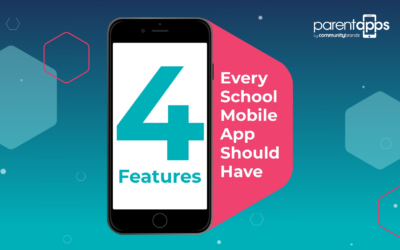All great marketing campaigns have one thing in common: they speak directly to their audience. This is no small feat in an increasingly digital world; from emails to ads, we are constantly being exposed to messages that aim to get our attention.
Schools know this sentiment all too well. Figuring out how to reach potential families and stand out is a challenge, especially with limited marketing staff. In fact, over half of schools have one or fewer staff members dedicated to marketing.
But you know what they say—behind every obstacle lies an opportunity! In our School Marketing 101 series, we’re breaking down what you need to know to connect with new and existing families through impactful marketing campaigns.
Read on to learn about the first piece of the puzzle: getting to know your audience.
Understanding Your Audience by Using Personas
Why is it important to understand your audience? They are foundational to all your marketing efforts. Don’t waste time (and money!) throwing paint at the wall and seeing what sticks! Instead, learn about your audience from the start. Doing so will give you a clear direction when planning marketing initiatives and increase the likelihood of engaging mission-aligned families.
Marketers use customer personas to understand their audience. A persona is a fictional representation of your ideal target audience; it helps you understand their wants, needs, and values. Personas weave together information like demographics, behavior, challenges, and goals to give you a complete picture of who you want to connect with.
Step One: What You Need to Know About Your Audience
To start developing personas, consider these key areas:
- Demographics: This includes information like age, generation, gender, geographic location, income, profession, and family structure. Demographics will help shape how you market to your audience.
- Behaviors: Behaviors range from device preferences and most-used social media platforms to hobbies, interests, when they are online, favorite publications, and groups or organizations they belong to. Studying audience behavior will influence where you market information to different users.
- Challenges and Goals: For schools, think about what issues are top of mind for families that you can help address. This will help to shape what you market to your audience. Here are prompts to get you started:
- What aspirations do they have for their children?
- Are there multiple members of the family with whom the school needs to communicate?
- How do they balance work and school schedules?
- Are there concerns about the cost of tuition?
- What are their childcare needs?
Step Two: Research Your Audience
There’s a good chance that you already have a strong grasp on the type of families you want to reach. We recommend backing up any initial ideas with research. Consider using research studies, surveys, and online channels to learn more about your audience and further develop personas.
- Research studies: What’s the difference between Gen X and millennials? And what social media channels are most effective for schools? Research studies can help you uncover everything from industry trends to generational differences. Our K-12 Trends Report is a great place to start.
- Family surveys: Surveys allow you to go straight to the source and ask your audience specific questions. Ask about communication preferences, level of satisfaction with current initiatives, or what additional resources your school could provide to families.
- Social listening: What is your target audience saying online? Turn to topic-specific forums, social media posts and comments, or trending hashtags to learn what is currently top-of-mind for your audience.
Step Three: Use Personas to Shape Marketing Campaigns
Now comes the fun part—using your newly developed personas to develop meaningful marketing campaigns! Think about how your school can solve your audience’s challenges and use that as the focus of your campaign. Use your demographic and behavior information to decide what channels and timing will be most effective.
For example, let’s say a large percentage of your target audience is millennial parents. Your research shows that they spend the most time on smartphones and prefer to consume content on social media. You also learn that they struggle to balance a busy work schedule with their children’s school needs, like attending parent-teacher conferences or coordinating extracurricular activities.
Knowing this, you run a social media campaign outside of normal work hours to promote your virtual parent-teacher conferences and after-school activities. You know that this campaign has a high chance of reaching your audience and drawing them in by addressing their challenges.
What’s Next?
By better understanding your audience, you can make sure your marketing reaches the right people, at the right time, with content that meets their needs. In turn, your marketing engages families and effectively boosts enrollment.
That’s not all—we still have plenty of school marketing knowledge to share. Learn how to turn your audience knowledge into a compelling narrative by viewing our webinar: Crafting and Engaging School Story.








